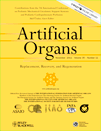Comparison of Parameters for Detection of Splanchnic Hypoxia in Children Undergoing Cardiopulmonary Bypass With Pulsatile Versus Nonpulsatile Normothermia or Hypothermia During Congenital Heart Surgeries
Abstract
The aim of this study is to evaluate gastric mucosal oxygenation together with whole-body oxygen changes in infants undergoing congenital heart surgery with cardiopulmonary bypass (CPB) procedure and the use of either pulsatile or nonpulsatile mode of perfusion with normothermia and pulsatile or nonpulsatile moderate hypothermia. Sixty infants undergoing congenital cardiac surgery were randomized into four groups as: nonpulsatile normothermia CPB (NNCPB, n = 15), pulsatile normothermia CPB (PNCPB, n = 15), nonpulsatile moderate hypothermia CPB (NHCPB, n = 15), and pulsatile moderate hypothermia CPB (PHCPB, n = 15) groups. In NNCPB and PNCPB groups, mild hypothermia was used (35°C), whereas in NHCPB and PHCPB groups, moderate hypothermia (28°C) was used. Gastric intramucosal pH (pHi), whole-body oxygen delivery (DO2) and consumption (VO2), and whole-body oxygen extraction fraction were measured at sequential time points intraoperatively and up to 2 h postoperatively. The measurement of continuous tonometry data was collected at desired intervals. The values of DO2, VO2, and whole-body oxygen extraction fraction were not different between groups before CPB and during CPB, whereas the PNCPB group showed higher values of DO2, VO2, and whole-body oxygen extraction fraction compared to the other groups at the measurement levels of 20 and 60 min after aortic cross clamp, end of CPB, and 2 h after CPB (P < 0.0001). Between groups, no difference was observed for pHi, lactate, and cardiac index values (P > 0.05). This study shows that the use of normothermic pulsatile perfusion (35°C) provides better gastric mucosal oxygenation as compared to other perfusion strategies in neonates and infants undergoing congenital heart surgery with CPB procedures.




